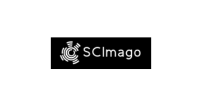Superintensive pisciculture associated with hydroponic system and water recirculation
DOI:
https://doi.org/10.5380/avs.v14i2.13365Keywords:
Lactuca sativa, Oreochromis niloticus, produção, productionAbstract
The advance of tilapia raising throughout the world is leading to an increase of effluent discarding in the environment causing huge damage to the nature. Although, when super-intensive pisciculture, water recirculation and hydroponics are put together, the residuum is not discarded, but reused by the plants. This work had the aim of analyzing the tilapia Oreochromis niloticus growth, as well as the water quality, simultaneously, in order to validate the integration between the intensive pisciculture and hidroponia, without using fertilizes, in a closed circulation system using an outdoor biofilter. The physical-chemical water qualities were monitored during the whole experiment period. The fish showed length and final weight of 17,6 cm and 100,2 g, respectively, and a density of 130 fish/m3 . The total consumption feed was 4760 g and the feed:gain ratio was 0,5. Forty-three lettuce plants were obtained, with a diameter average of 33,6 ± 5,9 cm and weight 158,33 ± 49,19 g by the end of the experiment. It was possible to conclude that the developed system may assure the sustainable and optimized development in the aquatic activity, making the use of water through the integration of the hydroponic system rational.
Downloads
How to Cite
Issue
Section
License
Authors that wish to publish in AVS agree with the following conditions:
- To keep copyright of the article and allow the AVS to publish the first time. The article will be licensed by Creative Commons - Atribuição 4.0 Internacional allowing the sharing of their work.
- Authors may distribute their work by other channel of distribution (ex.: local or public repository).
- Authors have the permission to publish their work online, using different channels (similar to above), even before the final editorial process.















